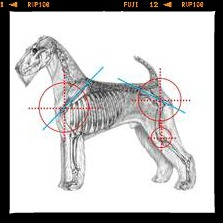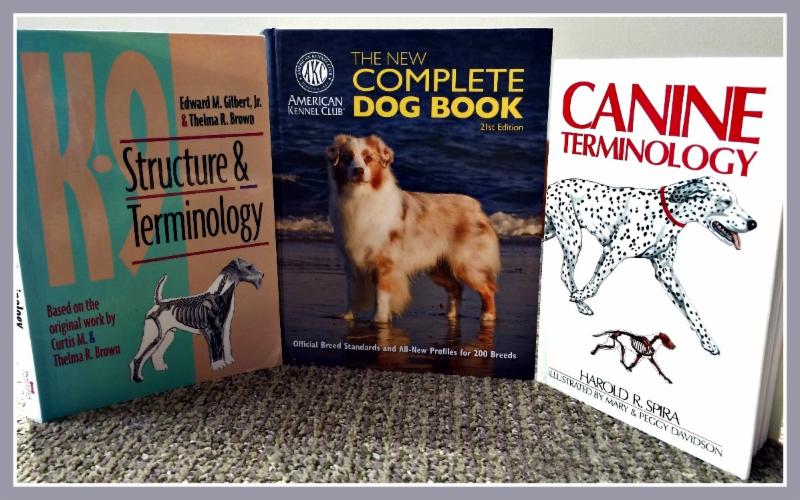The choice to groom my first dog wasn’t mine. I had been working as kennel help and would occasionally help the groomer when my tasks were done. Nothing major, just bathing a few dogs, trimming some toenails, maybe brushing out some mats. I might even dry a few dogs by hand.
 One day all that changed.
One day all that changed.
I still remember that call from my boss. She phoned me at home one night to tell me the full-time groomer we’d had was no longer with the salon. In an instant, my job changed from kennel help to groomer.
My first day on the job, I had six dogs on my roster – and no clue how to groom them. At the time there was nothing like Notes From the Grooming Table or even The Theory of 5 to guide me down this new path. Being young and fearless has its advantages – and yes, I got through my first day at my new job.
I won’t say that during those first few months I did beautiful work. Far from it. But there was something about it I liked. I was working with animals. Being creative. Having a skill that needed to be mastered. I found it all rewarding and challenging at the same time. The more I learned about dogs – and grooming them – the more I wanted to understand how to do it well.
Wanting to learn more brought me to voluntary certification testing. I studied breed standards and terminology. I learned about structure and movement. I worked hard to achieve competition level pet styling. As I became more knowledgeable, my skill level at the grooming table improved immensely.
In some ways, educating myself was like learning a foreign language. I bought my first AKC Complete Dog Book in 1979. It was the yellow one. Since then I have owned every version put out by the AKC including their latest edition (which is amazing by the way!).
I still remember that first yellow book. I soaked up the words but was clueless as to how to apply what I was reading. The terms and concepts were abstract in so many ways. I kept my trusty highlighter in my hand – but I really didn’t even know what I was highlighting. I tried to imagine what the words meant, but I couldn’t form a picture in my mind. I just didn’t know.
 To complicate things even further, I started attending clinics. Advanced clinics. The demonstrators were talking about structure…movement… angles. I was totally lost. All this information was over my head. But I never gave up. As baffled as I was, I was still fascinated. I wanted to figure it out.
To complicate things even further, I started attending clinics. Advanced clinics. The demonstrators were talking about structure…movement… angles. I was totally lost. All this information was over my head. But I never gave up. As baffled as I was, I was still fascinated. I wanted to figure it out.
Every time I ran across a mysterious word in the AKC Complete Dog Book, I looked it up in the glossary. (Keep in mind this is long before the age of the internet and Google searches!) The more I learned – the more I wanted to learn. I started hunting for books that would help me understand how a dog was put together and why.
The next book I discovered was Canine Terminology, by Harold R. Spira. It was a gold mine! It was a visual dictionary of terms. All those things I struggled to imagine on my own, I could now see. How did those terms play out? What was a deep set eye? What was considered high ears? What were parallel planes? What was the difference between a cat foot and a hare foot? Any term that I found in the breed standards, I could almost always find a thorough explanation for in Canine Terminology.
I was feeling pretty confident as my knowledge grew. I could now envision what a dog that was standing still should look like based on the written standard. Yet, I still didn’t understand the “whys” of what I was doing. And I was certainly still clueless when it came to movement. All that talk about angles in the front and rear assemblies – what? How does that work? But more importantly why does it work – and when a dog is not built correctly, how does it affect the dog?
That’s when I discovered K9 Structure & Terminology, by Edward M. Gilbert, Jr. and Thelma R. Brown. It was like a light bulb going off in my head. I still didn’t totally understand the angles but I could visually see how the angles would work together when it came to effective movement. What I really loved about this book was the authors’ use of wild animals as examples. They talked about how the animals were structurally designed to survive – and thrive – in their environments.

The domesticated dog is a man-made creature. Breeds were originally bred and developed to assist man to do thousands of jobs. Almost all purebred dogs have some working trait in their backgrounds. How they are structurally put together allowed them to work efficiently – or not – for the job they were designed to do. Man stole those ideas by studying wild animals. With controlled breeding, man was able to create dogs designed to excel in areas wherever they needed help. The domesticated dog was there, working right beside man, to survive and thrive.
Today, many of those working roles are no longer required due to advancement in the industrial age and technology. Many breeds have been lost – while other ancient breeds still exist in small pockets around the globe. By the same token, new breeds are being developed in the domestic dog to meet the changing needs of mankind.
In the 12 years since I wrote Notes From the Grooming Table, there have been over 50 new breeds introduced to the American Kennel Club (that’s why I wrote the new Second Edition). When we travel outside the US, there are many breeds that we have never heard of – or seen – yet they are ancient breeds to their countries. Most of these breeds have specific roles and duties. The structure of the dog determines whether they are efficient in their roles – or not.
As professional all-breed pet groomers and stylists, it is critical that we understand the finer attributes of what makes up a purebred dog. The better we understand what the breed was developed for, how it was used, and what the ideal specimen should look like, the better we become with our craft. Plus, this knowledge allows us to interact and better understand our pet clients every day.
Regardless of how you get your training – through a formal training program, an apprenticeship program, or even if you are self-taught – never stop learning.
Knowledge builds confidence. The more confident you have, the more proficient you will be with every dog that crosses your table. Understanding allows you to take advantage of opportunities when they land at your feet. Education, knowledge, and the desire to grow are the tools you need to reach your maximum potential.
What books or learning tools have helped you succeed? Jump over to the Learn2GroomDogs Facebook page and tell us what works best for you!
Happy Trimming!
~ Melissa


